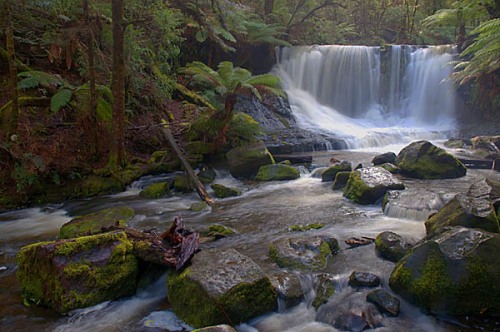
Uluru, © Rob Walls Photographed on Kodachrome with a Widelux camera
Parks Australia has recently released a draft park management plan for Australia’s Uluru Kata-Tjuta National Park, which places quite onerous restrictions on photography within the park. Part of the problem stems from the all-encompassing definition of commercial photography as defined in the report. In most international jurisdictions “commercial” photography excludes editorial photography. It is generally used to define filming or photography where props, models, lighting and a production crew are required; photography that would interfere with the normal operation of a park and a visitor’s enjoyment.
Parks Australia for reasons they state, of “protecting the natural and cultural values” of the site chooses to institute regulations where all professional photographers must apply for permits and approval to shoot pictures in the park precincts. There are no exceptions. (I should add that these regulations have, in similar form, been in place for some years. The draft report however, seems to indicate a hardening of stance, for reasons not at first, obvious.)
The justification given for the restrictions is based on the Environment Protection and Biodiversity Conservation Regulations 2000 which states under the heading Deriving Commercial Gain from Images Captured:
(1) A person must not use a captured image of a Commonwealth reserve to derive commercial gain.
(2) For sub-regulation (1): captured images include an image that was not captured for a commercial purpose or in contravention of the Act or these regulations.
What the prevention of ” image capture” (i.e. photography) has to do with environment protection and conservation is beyond my understanding. It also effectively makes criminals of every photographer who has ever distributed for publication a photograph made of a Commonwealth reserve.
Now, contrast this with the simplicity (and generosity) of the equivalent US regulations on Commercial Filming; Section 1(c) of Public Law 106-206 signed by President Clinton on the 26th of May, of the same year:
STILL PHOTOGRAPHY
“…the Secretary shall not require a permit nor assess a fee for still photography on lands administered by the Secretary if such photography takes place where members of the public are generally allowed…”
If it applies these regulations Parks Australia is choosing to ignore the traditional symbiotic relationship between national parks and landscape photographers, whereby photographers publishing pictures of a park provide free publicity and help generate park attendance. Of course, one could be cynical and suggest that using the EPBC legislation is an effective way of eliminating competition for the parks management’s declared intention of establishing a commercial image library within the park (Section 3.97 6.6.8 of the Uluru Kata-Tjuta Draft Management Plan ).
If these regulations are imposed they will generate a lot of friction with photographers. They will also create a ill-will from magazine editors, who faced with deadlines, are expected to get approval to use pictures of Uluru. The overall result will basically be counterproductive as there will be a reduction in publicity for the park.
The reality is that there are currently innumerable pictures of Uluru, from every angle and aspect, available from a multitude of sources. How Parks Australia imagines that it can control how the park is portrayed defies common sense. A search on Google returns 479,000 hits for pictures of the site. The photo sharing site Flickr turns up 82,127. Both of these could be defined as commercial use of photographs of the park. A keyword search of one of the largest UK based picture agencies returns 3,082 photos. Almost any photo library of reasonable reputation would have anything from 50 to several hundred pictures on file. There are literally millions of pictures out there.

Google image search showing some of the over 400,000 photos of Uluru
These are the resources that travel and feature writers, use for publication in magazines, and newspapers throughout the world. They are part of the traditional way in which interest is generated amongst travellers to visit a site. For Parks Australia to come up with ideas that use tax-payer dollars to inhibit tourism promotion, especially in a climate of declining visitor numbers, defies common sense. Asking photographers to apply for permission to take photographs is like asking musicians to apply in writing before they can play music; a process guaranteed to stifle their creativity.
Uluru was handed back to the indigenous community with reassurances that under Aboriginal management it would not be alienated to access by the broader community. That now appears to be happening. To read the photography guidelines go here. You’ll have to go to page 95, as parks management have, within recent days, taken down the direct link to its image capture guidelines.
Your comment would be most appreciated, as I’d like the opinions of the photographic community before drawing the attention of the relevant ministers to this issue.
















 Tasmanian Times
Tasmanian Times